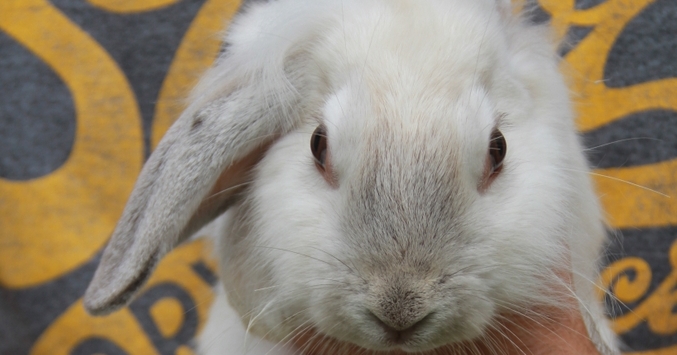
When Cameron bought a couple of young rabbits for his children, he expected them to be accident-free pets. Rabbits normally live sheltered, safe lives compared to other pets like dogs and cats.
He set the rabbits up with a standard hutch and an enclosed wire mesh run so that they can hop around the lawn. They’re allowed out occasionally to have more extensive exercise, but they can’t get out of the garden. Cameron knew that the rabbits needed to be vaccinated to protect them against viral infections, but he didn’t think that he’d need to worry about the risk of either of them being involved in some sort of traumatic incident.
Nobody saw what happened to Bongy: there was no obvious accident. About a week after bringing the two rabbits back from the pet shop, Cameron noticed that Bongy was holding his back right leg at a strange angle. It was sticking out from his body in a peculiar way and he wasn’t putting any weight on it.
Cameron brought the young rabbit in to see me, and I could tell at once that he’d suffered a serious fracture to his lower limb. The tibia – the equivalent to the human shin bone – had snapped like a brittle wooden stick. The affected limb was flopping around loosely at an unnatural angle.
The rabbit must have somehow trapped his leg in something, then twisted suddenly. Perhaps it had been snared in a hole in the wire mesh of his cage, or stuck in a crack at the side of the hutch. A young rabbit has a fine skeleton that can sometimes fracture surprisingly easily, and it wouldn’t have taken much sideways force to break the bone.
In all species, including humans, when a bone breaks, it’s up to nature to heal it. Doctors and vets do whatever’s necessary to fix the limb in its normal position so that the broken ends of the bone are held in close proximity to each other. The body then produces new bone that joins the broken ends together.
The ideal answer for Bongy would have been to use metal implants, such as pins and plates, to secure the damaged bone in the optimal position until it had healed: this is what would have happened with a similar fracture in a human, dog or cat. However Bongy was a tiny patient, and there was a risk that his delicate, fragile bones would shatter as the implants were screwed into place. Additionally, the cost of the operation could exceed €1000, and there was no guarantee of success.
A choice was made to try a different approach: the broken leg was supported by a splint that was bandaged into place. This held the bones securely enough so that they’d heal, but the end result wasn’t likely to be ideal, because with the splint, it was impossible to get the bones held in their normal anatomical position.
After four weeks, Bongy’s leg had healed, but there was a complication: instead of the leg being straight, it’s healed at an angle. His shin bone is now bent.
Bongy now looks odd as he hops around the garden: his back right leg sticks out at an angle. But he doesn’t seem to mind: it’s stable, it’s not sore, and he can move around comfortably. A rabbit lives a simple life, and whether a leg is bent or straight really doesn’t matter too much. Bongy now hops around with as much enthusiasm and energy as his hutch mate.
Tips
- Broken legs can happen in all species, from hamsters to humans
- Repair always involves fixing the bones in a rigid position while they heal
- The ideal answer for a broken leg isn’t always possible or affordable




Please note that I am unable to answer veterinary questions in comments. If you have questions or concerns about your pet's health it is always better to contact your vet.